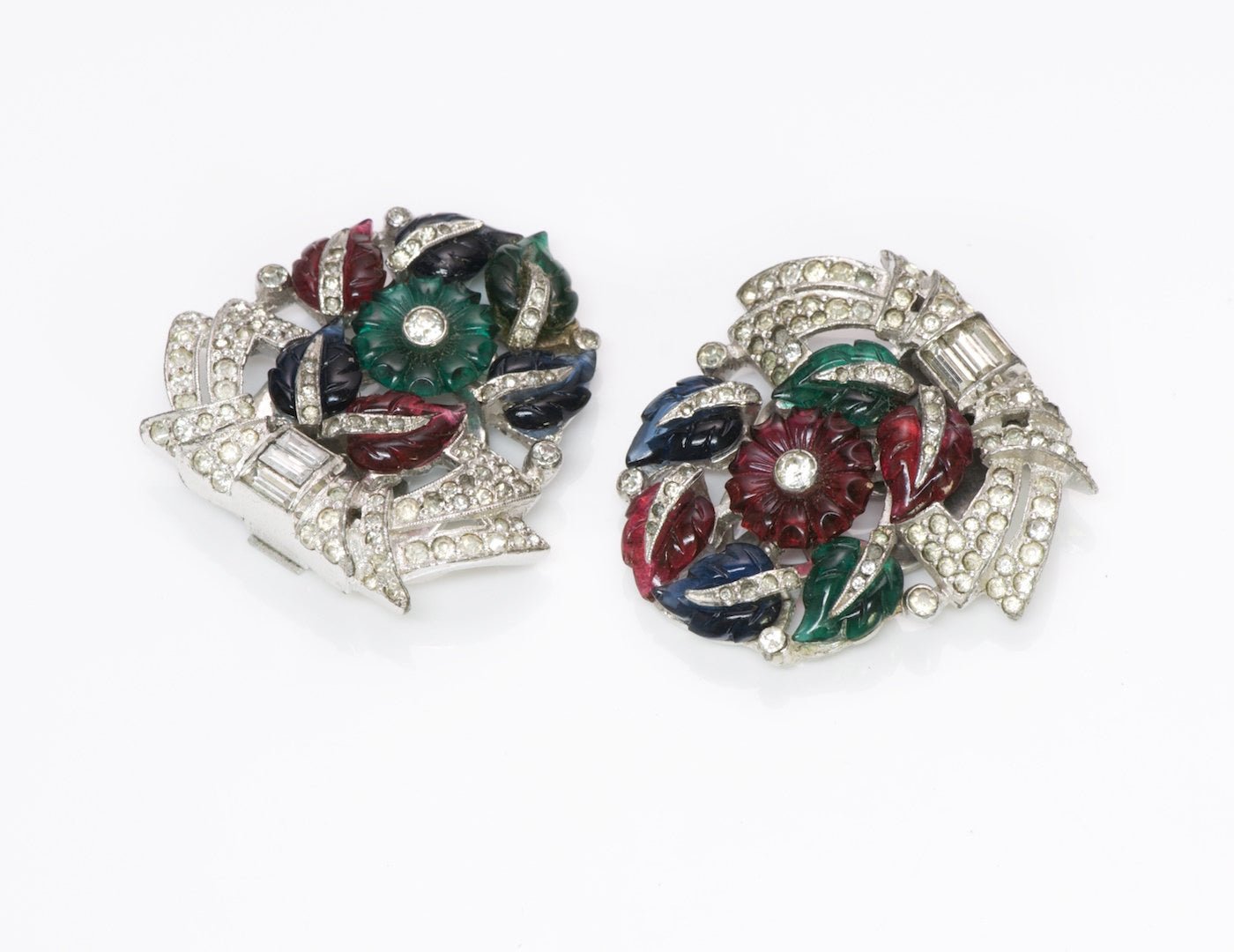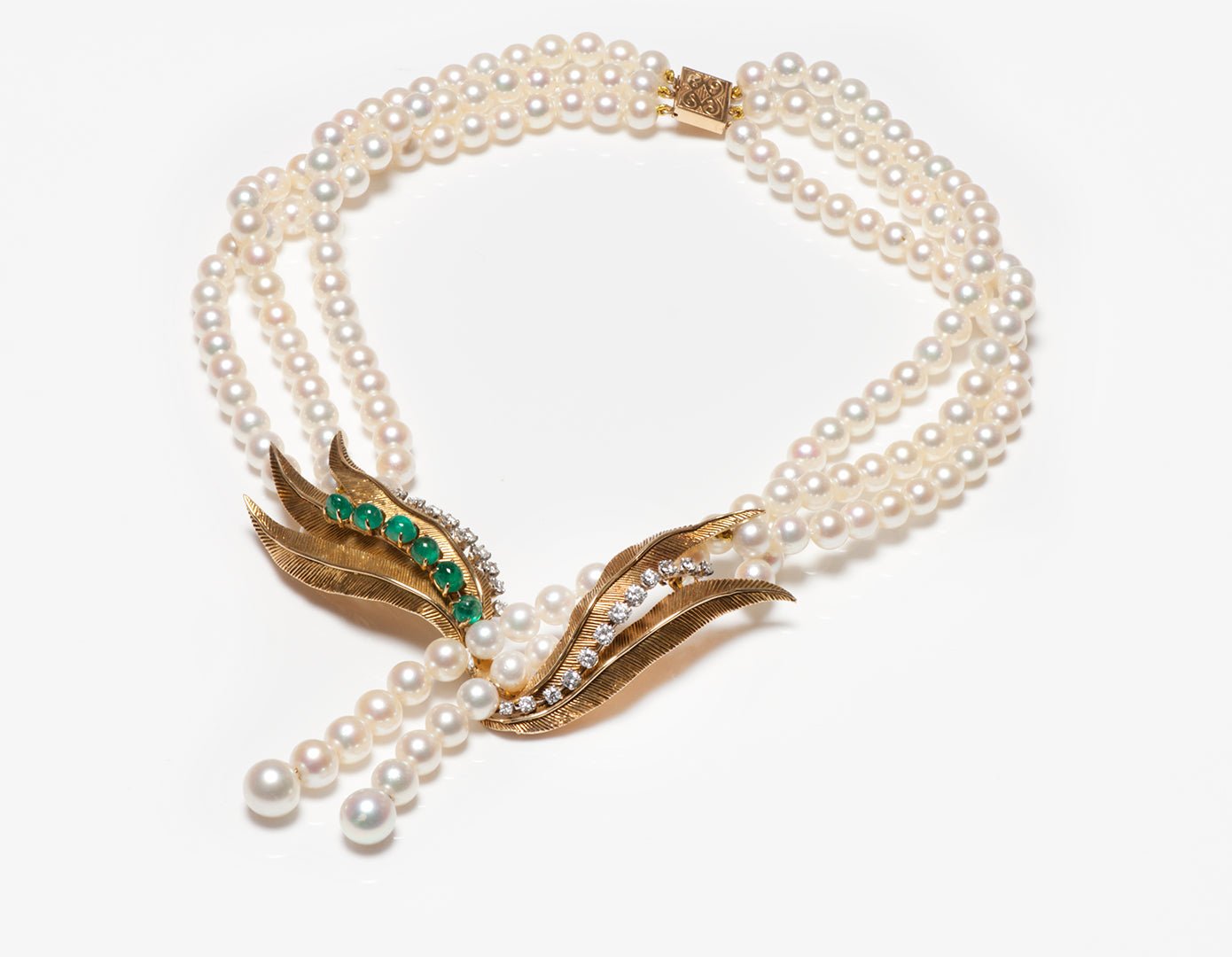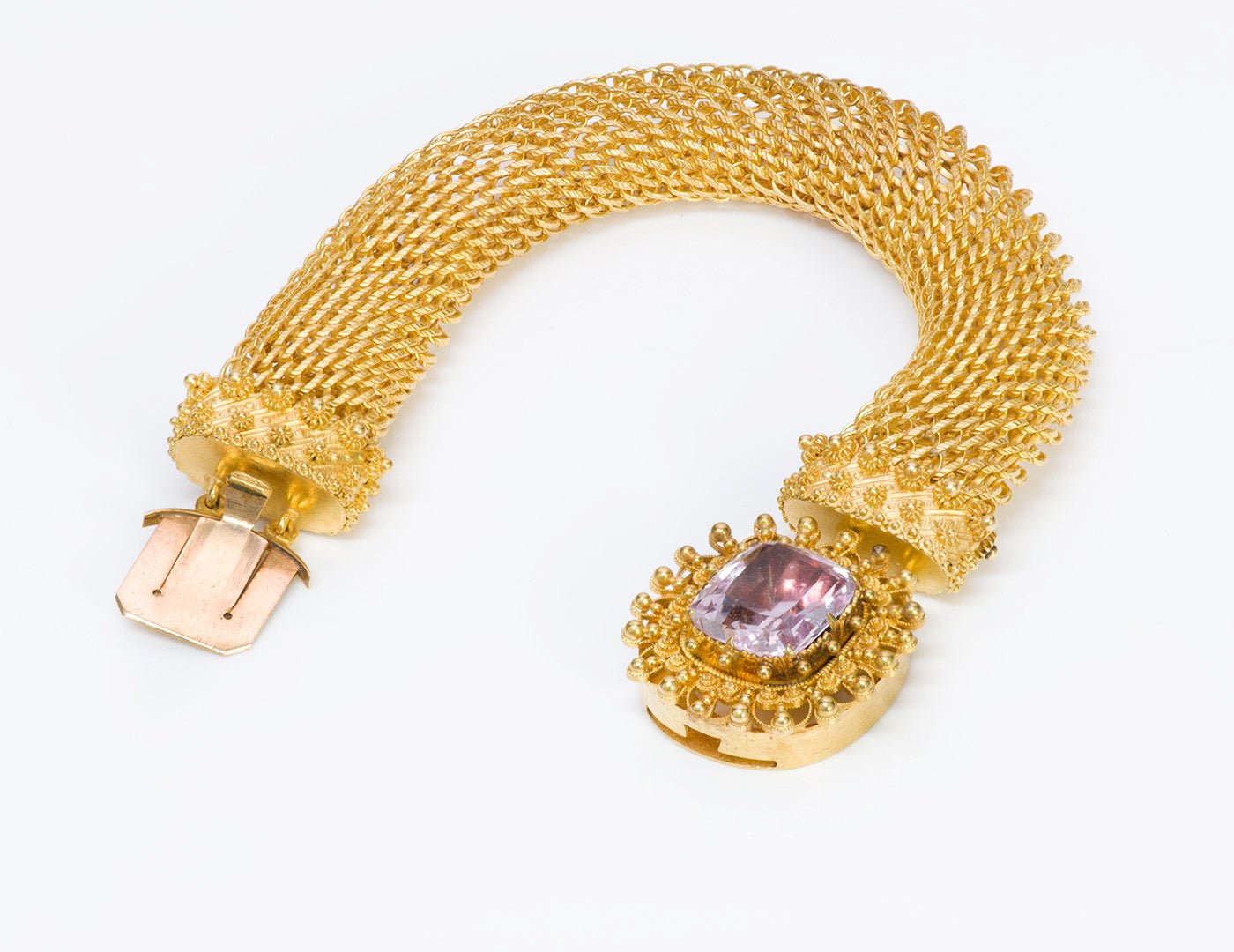
Fashion Jewelry by Trifari
Trifari Jewelry
Trifari has been one of the most respected and admired producers of costume jewelry in the United States since the 1920s. The company has designed jewelry that’s been worn by countless high-profile clients, from Mamie Eisenhower to Madonna and to this day is one of the most popular and sought-after vintage jewelry brands.
Early Trifari Costume Jewelry
Gustavo Trifari was born to a family of goldsmiths, native to Naples, Italy He was trained by his grandparents which prepared him to have a very successful business in the U.S. He emigrated to the U.S. in 1904 where he began making his beautiful Trifari jewelry. His skills, experience and aesthetics led to him producing fine, expensive looking pieces.
In 1910 Gustavo Trifari joined forces with his uncle Ludovico Trifari, and established a jewelry firm under the name of ‘Trifari and Trifari’. After his uncle left the company, Trifari kept fabricating his costume jewelry under the Trifari brand being called ‘Trifari Costume Jewelry’.
By 1925, Gustavo Trifari combined his brand with sales managers Leo Krussman and Carl Fishel. The growing company was known as ‘Trifari, Krussman and Fishel’ then later back to simply ‘Trifari’. As the name of the company’s name and style changed, so did the company’s mark; depending on when it was made Trifari jewelry is typically marked with "Jewels by Trifari," "TKF" (for Trifari, Krussman & Fishel), or "Trifari,".
Trifari employed many skilled craftsmen including model makers, stone setters, and designers that had previously worked in the fine jewelry industry therefore many fashion magazines would compare Trifari pieces to Chanel costume jewelry. Trifari pieces were much smaller in size with delicate and intricate designs and said to resemble fine jewelry more than costume jewelry.
Alfred Philippe
In 1930, renowned French jewelry designer Alfred Philippe was hired as head designer bringing style and luxury to the company. This is when Trifari really gained attention and recognition.
Parisian born, Philippe trained at the prestigious Ecole Boulle enabling him to become a designer at the elite firms of Cartier and Van Cleef and Arpels. During the 1930’s and 1940’s, ‘diamante’ jewelry was the most sought-after style. Philippe introduced the high level of craftsmanship that he had previously picked up to Trifari's costume jewelry pieces, such as the invisible stone setting technique he had developed, building up on the fine jewelry look and Trifari was transformed.
Superb Craftsmanship Behind Trifari’s Successful Designs
By the 1940’s Trifari was well known for its high quality and fashion forward costume jewelry designs. Highly respected, Trifari had a loyal client base, from celebrities to the everyday woman. The Great Depression had meant that people were seeking popular, affordable jewelry, yet during World War ll metal rationing meant materials became more difficult to source. To combat this, Trifari began to make costume jewelry using more expensive metals like sterling silver and gold, which meant prices dramatically rose. Trifari’s war-era pieces of jewelry are today among the most highly sought after of all Trifari collections.
Once restrictions on materials were removed after the war, Trifari returned to using more affordable metals, plated metals and other inexpensive base metals whilst holding on to high standards in craftsmanship, design, and beauty. Because many customers liked the look of gold and silver, Trifari created its own toned alloy which didn’t tarnish known as ‘Trifanium’. This alloy was advertised in 1948 as “golden-toned Trifanium” or “platinum-toned Trifanium.” Along with Philippe’s designs incorporating patriotic symbols like flags and eagles, glorifying the role of the American Armed Forces in the Second World War, Trifanium helped place Trifari jewelry above other jewelry pieces at the time.
Iconic Jelly Belly Jewelry, Clip Mates, and Tutti Frutti
Another innovative Trifari design which was very popular in the 1940’s and still is much sought after is the Jelly Belly pin named for the solid lucite ‘pearl’ belly of the insect or animal figure, another creation materialized by Alfred Philippe. These distinctive pieces were made of Lucite from airplane window rejects during World War II.
Other iconic pieces offered at the time were called ‘Clip Mates’. When the two-piece Clip Mates were united, it became a large brooch, and when separated, Clip Mates could be used as dress clips.
Floral motifs, sculptures and sprays made of bright stones gained fame under the artistic eye of Philippe, who designed them and were popular in the 1930’s. In the 1950’s and 1960’s Trifari fruit and vegetable pins featured colorful fruits and vegetables in matte gold or silver settings. These bright and colorful designs were named Fruit Salad, or Tutti Frutti.
From Jewelry Design to Brand’s Logo
Alfred Philippe introduced many high-profile jewelry designs and famously designed the Crown Trifari brooches which reigned from the late 1930s to the 1950s. Crown Trifari brooch pins are enhanced by brilliantly colored cabochons, decorated with rock crystals or individually set rhinestones. Crown Trifari jewelry was so successful that Trifari added a crown to its signature mark, which became the brand’s logo sometime around 1937, symbolic of the design’s success. Today, vintage Crown Trifari is a sought-after treasure being ever popular among collectors and fashionistas alike.
As Trifari continued its impressive market growth, other companies copied the jewelry maker’s work. To counter this threat, Trifari frequently published fashion magazine ads that stated “If it isn’t signed, it isn’t Trifari.” and was the first costume jewelry maker to implement a nationwide advertising campaign to market its creations. The advertising slogan “Jewels by Trifari” from the campaign launched in 1938 was used for decades. The advertisements were classy, beautiful and jewelry was adorned by beautiful models establishing a much-desired brand by actors in Hollywood.
The name “Trifari Alfred Philippe” was renowned for almost 40 years. Phillippe served as Trifari’s lead designer until 1968.
Since the mid-1990s, Trifari has been a part of the Monet jewelry group. The branded pieces produced by Trifari before the ‘90s are most sought after among collectors.


















